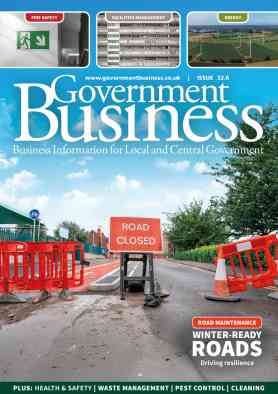Reducing cost and emissions
From 1 April, large private and public sector organisations that had a half hourly meter during 2008 must register under a new mandatory emissions trading scheme, the CRC Energy Efficiency Scheme. It has been designed by the UK Government to help deliver its commitment to reduce carbon dioxide (CO2) emissions by at least 80 per cent from 1990 levels by 2050. The scheme could reduce CO2 emissions by approximately 11.6 million tonnes per year by 2020 – the equivalent to taking roughly four million cars off the road.
The central government sector is responsible for carbon dioxide emissions of 5.1MtCO2/yr, with a cost-effective potential saving of about 1.1Mt/yr. The central government sector is split into two main estates: Civil and Ministry of Defence (MOD). Typical small establishments within the central government sector include police stations and court houses.
Local authorities spend about £750 million on energy every year. A lot of that money is wasted on energy that either isn’t needed, or isn’t used efficiently. Most local authorities could save large amounts of money – and help the environment – by reviewing their energy usage.
The public sector is one of the top ten industry sectors that were affected by the CRC Energy Efficiency Scheme when it started in April. The scheme affects local authorities, NHS organisations such as Primary Care Trusts, central government departments and their respective executive agencies, and universities.
The CRC Energy Efficiency Scheme is a new government initiative aimed at cutting carbon emissions from large public and private sector organisations. All organisations that had at least one half hourly electricity meter during 2008 must register for the CRC Energy Efficiency Scheme between April and September this year. Those that used at least 6000MWh of electricity per year through these meters (equivalent to about £500,000 worth) will need to buy and sell allowances to cover their emissions.
How it works
The CRC Energy Efficiency Scheme will be phased in over three years. Once fully operational, CRC Participants (about 5,000 organisations) will be required to monitor their emissions and purchase allowances for each tonne of CO2 they emit at the beginning of each reporting year. The first sale of allowances happens in April 2011, covering projected CO2 emissions April 2011 to April 2012. The government will then sell these allowances for £12 per tonne of CO2.
The scheme is revenue neutral overall, meaning all revenue raised from selling allowances is re-distributed back to participants according to their position in the annual Performance League Table. As a consequence, participants successful in reducing energy consumption will not only save money on energy bills, but will need to purchase fewer allowances and will receive greater financial reward through revenue recycling. These savings should be well in excess of the costs of participating in the scheme.
Participants that perform well will also be placed higher in the Performance League Table, which will be published annually by the Environment Agency. Being higher up the league table will have the added benefit of enhancing the organisation’s reputation.
There are many ways the public sector can reduce its carbon emissions. Often these measures are fairly simple and low-cost.
Office equipment
From PCs to vending machines, office equipment of some kind or another is used by almost all UK businesses, and accounts for around 15 per cent of all the electrical energy used in UK offices. It’s an area where huge savings can be made, as effective management of equipment can reduce its energy consumption by up to 70 per cent. Technology advances daily, which means new equipment with better energy efficiency ratings can lead to big savings.
Develop a set of guidelines – an office equipment policy – to standardise operations and communicate it. For example, activate stand-by modes on PCs and set up printers to print both sides of the paper (duplex printing).
Well-maintained equipment is more efficient and lasts longer. So set up a maintenance schedule, keep equipment free from obstructions and prevent over-heating by cleaning filters and fans regularly.
Heating & hot water
Heating and hot water can account for 60 per cent of your total energy costs. And because it’s possible to reduce your heating costs by up to a third, the potential savings are substantial.
Don’t turn up the heating unless you really need to. Try to keep your thermostat at 19°C as your heating costs will increase by eight per cent each time you turn the temperature up by just one degree.
Install boiler sequencing controls if you have a number of boilers on your site – a boiler sequence control that fires the minimum number of boilers at the same time will save energy. Replace inefficient boilers as higher efficiency boilers gain better energy savings. In commercial or industrial buildings with warm air heaters and high ceilings, de-stratification fans can reduce energy use by 20 per cent by blowing warm air down to ground level where it’s needed.
Lighting
On average, 25 per cent of an organisation’s electricity costs come from lighting. Yet you can cut these costs by up to a third while reducing your carbon footprint and improving the working environment for your staff.
Switch lights off in empty rooms. You could cut your lighting costs by as much as 15 per cent just by making sure you turn off lights in areas that aren’t being used. If you have fluorescent tube lighting, changing from T12 tubes to T8s will bring energy savings of ten per cent. Upgrading lamps and fittings to T5 will bring even greater savings and will retain a high light output.
Occupancy sensors, which switch off lights when a space isn’t being used, can reduce lighting costs by 30 per cent. Lighting a space artificially when daylight is already doing the job is a waste of energy. Light sensors (photocells) can switch off or dim artificial lighting when there is sufficient daylight.


